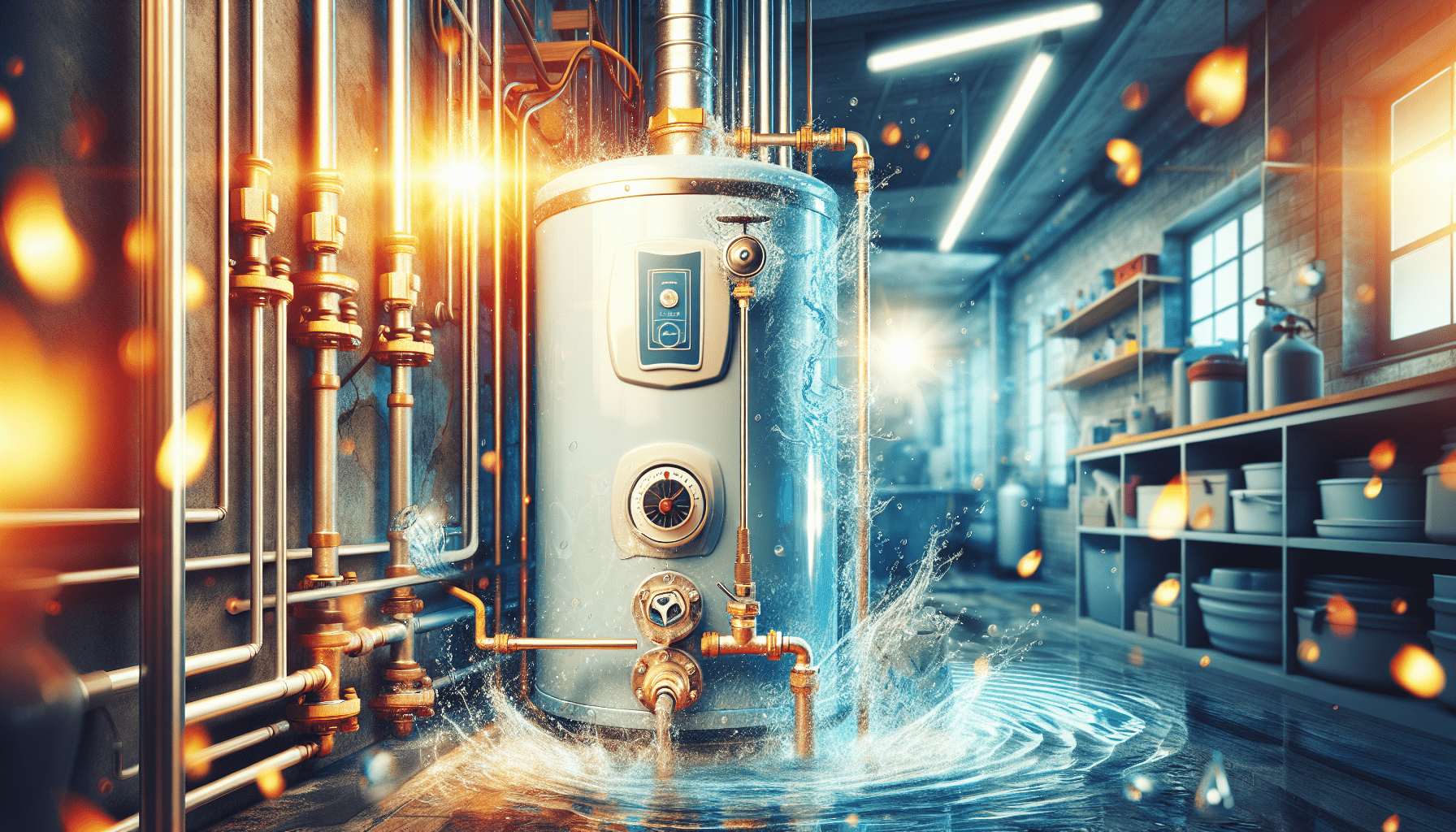Have you ever wondered how often you should flush your gas water heater? It’s one of those household dilemmas that tends to get overlooked until you’re knee-deep in a minor disaster. Ignoring this task can lead to issues down the line, like rusty water or even a malfunctioning heater. Fortunately, it’s not that complicated if you take it step by step.

What Does Flushing a Water Heater Mean?
Flushing your gas water heater means removing sediment and mineral buildup that accumulates at the bottom of the tank over time. This sediment can come from hard water, which contains high levels of minerals like calcium and magnesium. If left unchecked, the sediment can affect the heater’s efficiency and longevity. Nobody wants to have a lukewarm shower when it’s cold outside, right?
You might be wondering why you should bother with this at all. Well, regular maintenance can help prolong the life of your water heater and ensure it runs efficiently, saving you money on energy bills and unexpected repairs. So, let’s break down how often you should flush your heater.
How Often Should You Flush Your Gas Water Heater?
The general recommendation for flushing a gas water heater is approximately once a year. Keep in mind, however, that several factors can influence the frequency. Depending on the hardness of your water supply, you might need to perform the task more or less often.
Factors That Affect Flushing Frequency
Water Hardness
If you live in an area with hard water, you might find yourself needing to flush your heater more often. Hard water contains minerals that can build up quickly in your tank. A water hardness test can be a simple way to discover if you need to adjust your flushing schedule.
Usage Habits
If your household uses lots of hot water—think endless showers, multiple loads of laundry, and dishwashing—you might want to consider flushing your heater twice a year. Increased usage can lead to faster sediment accumulation.
Age of the Heater
Older water heaters might require more frequent flushing. As appliances age, their efficiency often decreases, and sediment can exacerbate these issues. If your water heater is nearing the end of its life, be sure to monitor its performance and sediment buildup closely.
Signs It’s Time to Flush
If you’re unsure whether it’s time for a flush, keep an eye out for several telltale signs:
- Rusty or discolored water: If your hot water looks less than clean, sediment may be the culprit.
- Unusual noises: A popping or rumbling sound during operation could indicate a sediment buildup.
- Decreased efficiency: If your water heater is taking longer to heat water, times have changed!
If any of these concerns resonate with you, it might be time to roll up your sleeves and tackle that flushing.

The Benefits of Flushing Your Gas Water Heater
Flushing your water heater may seem like a cumbersome task, but the benefits are well worth the effort. Here are a few reasons why you should consider it a priority:
Improved Efficiency
A clean water heater runs more efficiently. Sediment buildup forces the heater to work harder, consuming more energy. By maintaining a regular flushing schedule, you can help your heater operate optimally and save money on energy bills.
Prolonged Lifespan
By removing the buildup of materials, you can help extend the life of your water heater. Most heaters have a lifespan of around 10 to 15 years, but regular maintenance can push it to the upper limit or even beyond.
Better Water Quality
Flushing helps ensure that the water coming from your taps is clean and clear. Nobody wants to shower or wash dishes in water that’s anything less than crystal clear!
Preventing Problems Down the Line
Regular maintenance can prevent more significant issues. It’s far less expensive to flush your heater annually than to replace it due to neglect.
How to Flush Your Gas Water Heater
Now that you know why it’s essential, let’s talk about how to flush your gas water heater. It’s more straightforward than it sounds! Here’s a step-by-step guide to lead you through the process.
Gather Your Supplies
Before you start, make sure you have the following items:
- A garden hose long enough to reach your drain or outside
- A bucket (if you prefer not to drain outside)
- A screwdriver
- Safety goggles
Step 1: Turn Off the Heater
First things first—turn off the gas water heater. You can usually do this via the thermostat. If it’s gas, turn it to the “off” position. You’ll want to wait for the water to cool down a bit before proceeding, so take your time.
Step 2: Connect the Hose
Next, connect a garden hose to the drain valve located at the bottom of the heater. Make sure the other end of the hose is directed to a suitable drainage area, like a floor drain or outside.
Step 3: Drain the Tank
Now it’s time to open the drain valve. Turn it counterclockwise and let the water flow out. This step will help remove sediment and buildup. If you notice a cloudy appearance during the initial draining, that’s a clear sign it’s been a while since the last flush!
If it seems like sediment is clogging the drain, you can gently move it around with a long object like a dowel to create a clearer path for the water. Just be gentle—this is not a wrestling match.
Step 4: Fill the Tank Partway
Once all the water has drained, you can close the drain valve by turning it clockwise. Then it’s time to partially refill the tank. Turn on the cold water supply to your heater to wash away any remaining sediment. Let it run for several minutes to get a clear water flow.
Step 5: Turn the Heater Back On
Once you’ve completed the flushing process, you can turn your heater back on. If it’s gas, switch it back to your desired temperature setting. Boom! You’ve successfully flushed your gas water heater.
Common Mistakes to Avoid
Flushing your water heater isn’t challenging, but there are several common mistakes that can make the process less effective or even lead to new issues.
Forgetting to Turn Off the Heater
One of the simplest and most critical steps is to remember to turn off the heater before beginning. Skipping this step can lead to unpleasant surprises, like scalding hot water spraying everywhere.
Not Draining Enough Water
If you don’t drain enough water, you might leave sediment behind. Aim for a steady flow of clear water before closing the valve again.
Using the Wrong Hose
Ensure you use a hose suitable for hot water. Garden hoses are typically fine, but check for any signs of wear or damage. You wouldn’t want a burst hose spraying water at inopportune moments!
Conclusion
Caring for your gas water heater doesn’t have to be an overwhelming task. By taking the time to flush your heater once a year—or more often if necessary—you can enjoy improved efficiency, prolonged lifespan, and high-quality water every time you turn on the tap.
So, the next time you ponder how often to flush your gas water heater, remember that a little maintenance goes a long way in keeping everything running smoothly. Who knew that a water heater could be such a friendly, reliable companion in your daily life? Happy flushing!

